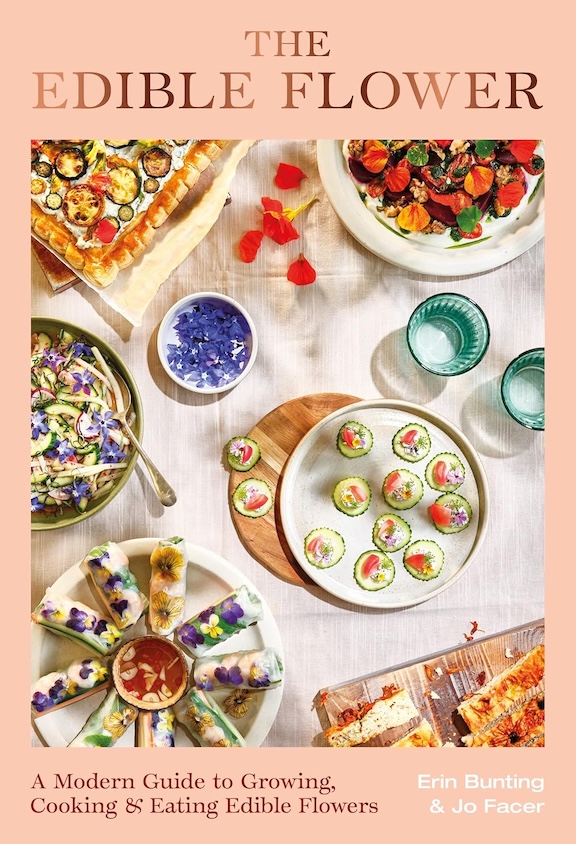
“The Edible Flower: A Modern Guide to Growing, Cooking and Eating Edible Flowers”
By Erin Bunting and Jo Facer
Laurence King Publishing, 2023
304 pages, hardcover, $40
Part cookbook, part garden guide, “The Edible Flower” has everything you need to get started growing — and eating — flowers. Authors Erin Bunting, a chef, and organic gardener Jo Facer have been serving garden-to-table meals at their smallholding in Ireland.
Most people think of flowers as decorative additions to a dish, but the truth is that flowers bring unique flavor and seasonality to foods, say Bunting and Facer. “Think of using fresh flowers the way you’d use herbs … nasturtiums smell of roses and honey, but are full of a peppery punch.”
“The Edible Flower” is divided into three chapters, prefaced with an introduction that serves as a beginner’s guide to flower growing. Facer emphasizes sustainable gardening methods, starting with the soil. Get to know it, she advises, and then feed it. Also, she suggests that gardeners create a new bed for edible flowers, instead of trying to squeeze new plants into existing beds. That way you can stay on top of weeds.
Chapter one is all about annuals, from borage to “viola” (not violet; and they call zucchini “courgette”). All can be planted outside before last frost, or planted the previous autumn and overwintered in a cold frame, notes Facer (who starts her plants in soil blocks). These flowers are also suitable for container gardening. Each flower entry contains information about why they grow it, how you can grow it, and the best way to harvest and prepare the flowers. A handy text box highlights harvest time, tips for using the flowers, and what they taste like. For example, borage tastes like cucumber, marigolds are citrusy, and mustards definitely add a peppery zing. Additional information lists plant height and sunlight and space requirements.
Chapter two shines a light on edible borders — herbaceous perennials like chamomile and chives, dahlias, daisies, hyssop, and thyme. Chances are you already grow some of these in your garden borders — but there are some great recipes as well as advice on how to divide your plants to keep them vigorous and healthy.
The book ends with a chapter on flowering trees and shrubs and an index that lists entries by flower or type of food. Recipes include soups, salads, breads, cookies and cakes, meat dishes, jams — even how to make your own pasta! There’s a section on how to use flowers to color icing, and how to press flowers to use as cake and cookie decorations, along with a list of the best flowers to press.
If you grow only one edible flower, choose calendula, says Facer. Calendula will bring color to your garden, and if you deadhead them, they’ll bloom all summer long. Calendula petals dry well and its seeds are easy to save.
Although I found a couple recipes intimidating, I came away with a few ideas of how to incorporate the flowers I already grow into the foods I already prepare. And I definitely think I’ll be pressing a few violets and daisies to decorate this winter’s holiday cookies.
– Sue Smith-Heavenrich
This review was originally published in the summer 2025 issue of The Maine Organic Farmer & Gardener. Browse the archives for free content on organic agriculture and sustainable living practices.